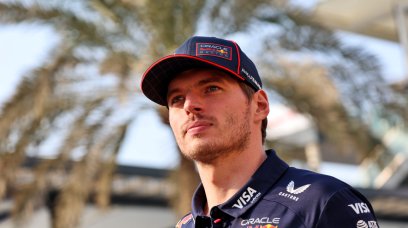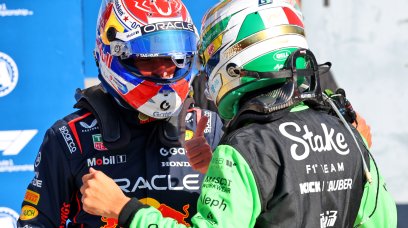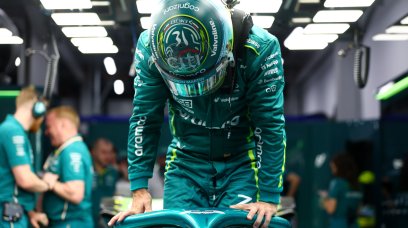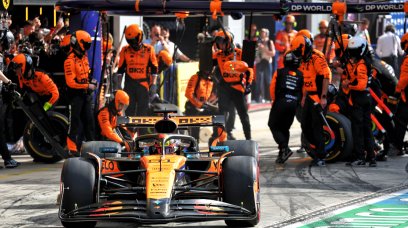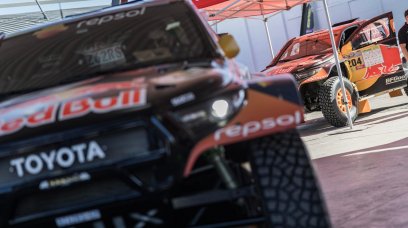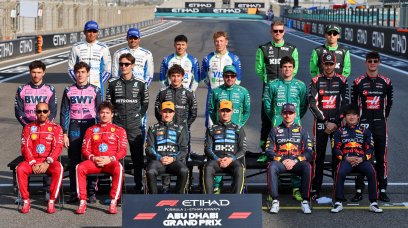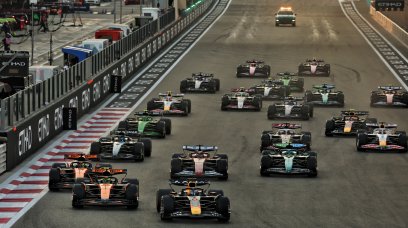Porpoising has been perhaps F1's hottest topic of conversation since the start of the 2022 season and the Azerbaijan Grand Prix weekend proved to be no exception. The bouncing problems faced by teams up and down the order were exacerbated by the Baku City Circuit and its layout with Mercedes, just as they were early on in the season, hit harder than most. Since the problem arrived/returned at the start of the year, most teams have managed to control the phenomenon through development upgrades. Ferrari, for example, also suffered from porpoising in Baku but the problem had no impact on their performance with Charles Leclerc able to secure yet another pole position. The Scuderia have managed to reduce its effects while it could be argued that rivals Red Bull, who did not complain of any porpoising issues in Baku, have eliminated the problem entirely. But what can be done to reduce porpoising and can anything be done to cure it for good as support grows for FIA intervention?
How have teams reduced porpoising?
Reducing the bouncing of F1's newest cars is completely different to eliminating porpoising altogether. There are many different ways in which teams can reduce the phenomenon with some solutions being more complex than others. The easiest way to do so is by lifting the ride height, preventing the car from being sucked so close to the ground that the airflow underneath is broken and the car bounces back up. However, that method has big consequences for car performance with downforce dramatically reduced. The majority of teams have instead adopted a plan in which a slight ride height increase is just one element, alongside a change in suspension set-up and a redesign of the floor tunnels that channel the underbody air.
Can it be eliminated entirely?
But what can teams do to eliminate porpoising entirely, just as Red Bull appear to have done with their RB18? RacingNews365.com have spoken to various aerodynamicists across the Formula 1 paddock to help build a greater understanding of the phenomenon and learn whether it is possible to develop a mathematical model for teams to simulate it. Speaking to RacingNews365.com , Adrian Newey mentioned the 'Strouhal number', a non-dimensional factor of an equation that can be part of a model to simulate porpoising. The engineers we talked to made it clear to us that the complexity of this mathematical model means that it requires very expensive simulation tools that not every team afford. To better understand its complexity: the wind tunnel work carried out by teams is done under 'stable conditions' where the air currents maintain a certain speed and flow in a normal way along the surfaces of the (virtual) car. But on track, this is not the case, with the air currents 'exploding', as it were, unleashing the phenomenon of porpoising. This is very difficult to simulate using a model with thousands of complex formulas. While under stable conditions, there is only one formula.
Are Mercedes right to demand a change of rules?
George Russell and Lewis Hamilton would both like to see a change of rules, be that a minimum ride height or the (re)introduction of active suspension, to prevent them any further back pain. There are a number of reasons why the Mercedes W13 is bouncing so dramatically, all relating to the overall aerodynamics of the car (and not just the design of the floor) and the suspension. Quite simply, it will be very difficult for the team to reduce the impact of porpoising due to the car's intrinsic design features. "It's like trying to scoop water out of a sinking ship with a basket," said a rival engineer has told RacingNews365.com . So while we shouldn't underestimate the effect that the W13's continuous bouncing could have on the health of the Mercedes drivers, the problem is not a safety risk needing intervention from the FIA. The answer must be found by Mercedes, without the help of a sudden regulation change. A sudden change of regulations could also be considered unfair to their rivals, who have invested time and resources in the topic to find either a solution or compromise.
Most read
